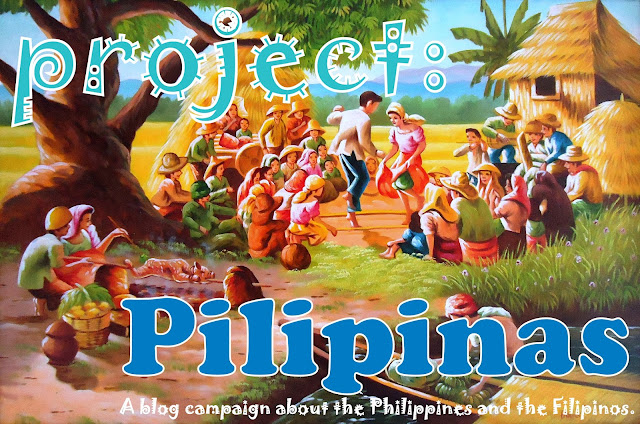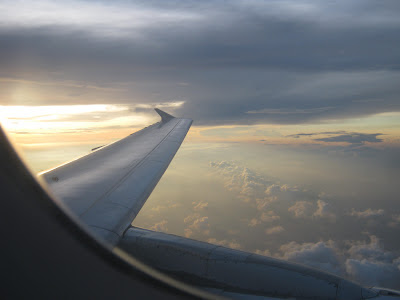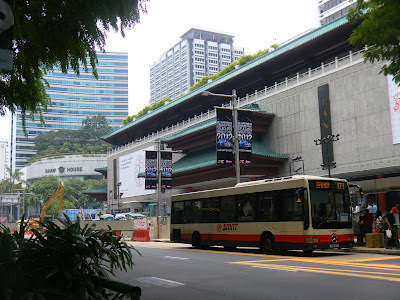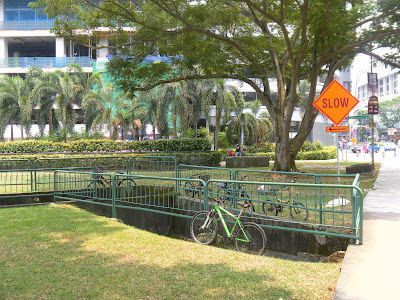Economies of countries in the world are being ranked by the International Monetary Fund (IMF), World Bank (WB), United Nations (UN) and CIA World Fact in accordance with the country’s Gross Domestic Product (GDP) for a given year. GDP is the market value of products and services produced by a particular country. Each ranking body may have other criteria or categories, but in general, the results of their rankings almost coincide. The ranking are pretty close from the top going down and there are only two to three divergence in the levels of economy ranking. In 2011, the Philippines is falling between the 43rd to 46th while Singapore is on the 38th to 39th position. On the average, Philippines has a GDP of US$220B while Singapore has US$260B. However, one big aspect to think about between these two countries if we are to compare them further is the population. Philippines has 92.3M people while Singapore has 5.2M. The implication of GDP of Singapore with respect to this aspect seems to be too far away from that of the Philippines. The following paragraphs will reveal more photos and facts on why dreaming to become like Singapore is not a bad idea at all for the Filipinos.
On the Photo: Photo Taken on the Plane Going to Singapore
The Singapore MRT System is definitely a magnificent wonder of the modern world. There are four major lanes which according to many travelers can enable you to tour the whole Singapore City within just one day. These lanes are the North South (or Red), East West (or Green), North East (or Purple), and Circle (or Yellow). Grab a map of these MRT routes and you’ll definitely be surprised of what it really looks like. This is a tunnel system and stations are buried from about 30 to 100 meters below ground level. Some call it the “underground world”. What could also probably support the claim that "by traveling via MRT, you can tour the whole city" are the Interchange Stations or simply the intersection points of the MRT lanes. If you have the map with you while exploring the whole city, worrying of going back home even late in the evening is a never situation to encounter.
Aside from that, there is something more exciting and inviting with the MRT system and that is the fare scheme. Using the smart card or what they call the “tap card” (an electronic/RF card), you can board and alight from one train to another without paying for additional fees or extra charges. Here is the simple explanation to that. When you enter the train station, you are going to tap in your card on the entrance booth. This booth is similar to what we have in the Philippines except that we only insert the card and not tap them. You will then proceed to the main train platform to wait for the train to arrive and then next to that is choosing the seat or standing area that is comfortable for you. On the next interchange station, as explained earlier, you have the option to transfer to the other lane. That is where the free charging applies. There is no charge whenever you transfer trains within the Interchange Stations. You will only be deducted when you tap out on the exit booth and proceed to your main destination point – mall, park, bus station, home, or wherever. You will only be charged with a fixed rate (somewhere between $1.2 to $2) on your single tap in and tap out session. Fantastic, isn’t it? That is what the Singapore MRT system has to offer. Now, you can compare it with our MRT system here in the Philippines with these photos below.
The Singapore bus system is also excellent. There is a designated route for every bus and there is a coding scheme that will completely guide you if you are new to the country. On every bus station, there is a route guide posted. You will observe that each bus has a corresponding number. So, to simply explain, just select your route and wait for the bus with that number code to arrive. The equivalent fee, the most updated one, is also published on the station’s travel guide. The bus system’s accuracy does not yet ends there. If you have that internet connection on your iPad or smart phone, you can check in real-time on when the next bus would arrive at the bus stop where you are waiting. You can download an application of this bus system guide of Singapore and it will surely help you a lot if you are a daily commuter. Bus terminals are also linked to MRT terminals and so it is going to be a day of hassle-free travel escapade for everyone. Check out these photos below and discover the discipline of commuters which more likely is not a common scenario in the Philippines. By the way, you cannot aboard or alight somewhere along the road, but only on the bus stations.
This next section is definitely for you to imagine on how to become a tourist at Singapore. This will take you from simple places to extremely loveable places in the city. The Harbour Front, Marina Bay Sands, Orchard, and a glimpse of the F1 racetrack at the Bay Front; it is up to you to enjoy. Scroll down and witness Singapore’s beauty at its finest.
On the malls and offices:
This article is brought to you by Project Noriel OnlineMarketing Group – a freelance online marketing company. Should you have questions or concerns about this blog, please email the author Noriel Panganiban at norielpanganiban@gmail.com. Explore more our blog posts about the Philippines and share your opinions about it.
On the Photos: Overviews of Singapore City and its Life
Manila to Singapore is approximately a three and a half hour airplane travel. You will arrive at Changi Airport, the main airport of Singapore. As an additional information, Singapore’s total land area is only 710 sq. km while that of the Philippines is 300,000 sq. km. With this huge difference in land area, you may wonder why millions of tourists still choose Singapore as one of their travel destinations every year. There are four airport terminals at Changi Airport which are simply designated as Terminal 1, 2, 3 and the fourth one is called the Budget Terminal. What’s really amazing when you arrive at Singapore is the system of transportation. Changi Airport is connected to the bus terminals, MRT stations, and taxi pickup points. You’ll never be lost or even happen to scratch your head on finding your next ride. You can decide on which of these transportation means would be suited to your budget, target destination, or any simple desire for travelling. If you have the hotel name or the address of your home, tell it to the taxi driver and they will probably drive you on time and at the right fare. Singapore is a very progressive city and it is one of the world’s best cities.
On the Photo: Photo Taken on the Plane Going to Singapore
Aside from that, there is something more exciting and inviting with the MRT system and that is the fare scheme. Using the smart card or what they call the “tap card” (an electronic/RF card), you can board and alight from one train to another without paying for additional fees or extra charges. Here is the simple explanation to that. When you enter the train station, you are going to tap in your card on the entrance booth. This booth is similar to what we have in the Philippines except that we only insert the card and not tap them. You will then proceed to the main train platform to wait for the train to arrive and then next to that is choosing the seat or standing area that is comfortable for you. On the next interchange station, as explained earlier, you have the option to transfer to the other lane. That is where the free charging applies. There is no charge whenever you transfer trains within the Interchange Stations. You will only be deducted when you tap out on the exit booth and proceed to your main destination point – mall, park, bus station, home, or wherever. You will only be charged with a fixed rate (somewhere between $1.2 to $2) on your single tap in and tap out session. Fantastic, isn’t it? That is what the Singapore MRT system has to offer. Now, you can compare it with our MRT system here in the Philippines with these photos below.
On the Photos: The Singapore MRT System
This next section is definitely for you to imagine on how to become a tourist at Singapore. This will take you from simple places to extremely loveable places in the city. The Harbour Front, Marina Bay Sands, Orchard, and a glimpse of the F1 racetrack at the Bay Front; it is up to you to enjoy. Scroll down and witness Singapore’s beauty at its finest.
On the Photos: At the Orchard Plaza
On the Photos: At the Marina Bay Sands
On the Photos: The F1 Race Memoirs
Singapore is consisting of different races from the Asian continent. Chinese, Malays, Indians, Sri Lankans and a mixed of other nationalities from the South East Asian countries inhabit the island of Singapore. Most of them are naturalized Singaporeans while many are permanent residents of the country. Despite of having these mixed races in the land, you will observe that there is really an excellent system of governance and active participation of the community on government programs. From the streets, train and bus stations, offices and shopping malls, here are the noticeable city lifestyles.
On MRT Stations:
On the streets and parks:
On MRT Stations:
- Commuters are walking fast; seems to be always in a hurry.
- People are busy with their gadgets – iphone, iPad, laptops, smart phones.
- On escalators, commuters who are in a hurry walk on the right side while those who are not stay in the left side.
- There are direction guides posted on every corner, hallway and entrance/exit point and they are readable.
- Reserved seats are strictly being given to the old people, pregnant moms, moms carrying infants or kids, and handicapped people.
- When the train arrives, there are demarcations lines reminding boarding passengers to wait for all alighting passengers to step out before they step in. This is strictly being followed.
- Inside the train, automated voice system informs the commuters when train is departing and when train is approaching the next station. Warnings and instructions about policies that must be observed inside the train are being given almost every minute and they are translated in the three major languages of Singapore.
- CCTV, spacious floors, ATMs, charging station, information booth, and the usual ads are visible inside all train terminals.
On the streets and parks:
- Vehicles run on the left side of the road. Traffic rules are strictly being observed. There is no such thing as “traffic” which for Filipinos refers to “heavy traffic”. On intersections, longest time of waiting is only about 30 seconds; typical time is about 15 - 20 seconds.
- There are bus lanes or yellow lanes and they are being followed, although there are still some cars that run through it.
- There are no police on the roads which can be seen directing traffic or monitoring traffic and pedestrians.
- Bicycles are still being used and you can see a lot of them locked on posts and fences near MRT and bus stations. No one seems to steal them.
- The sewerage systems are great. They are deep, no garbage floating, and they are covered with metals frames.
- Streets are generally clean although there are still plastics and papers scattered on some areas.
- No people are crossing the prohibited areas of the streets but only on the pedestrian lanes.
- High rise buildings, which are the normal residences of Singaporeans, are seen everywhere.
- There is an ERP lane (an automated ticketing system) for cars that will traverse the city streets. There is a corresponding fee for it similar to NLEX and SLEX in the Philippines.
On the malls and offices:
- The environment is almost the same as that in the Philippines but there are no security guards checking bags on entrances and exits.
- Prices can be still considered as cheap. You can eat with your SGD 2.
- People respect your culture, religion and lifestyle. People can wear their Muslim or Chinese costumes on a typical day of work.
On the Photos: Noticeable Things on Shopping Malls
Now, think about our country and imagine it is like Singapore. For sure, you want it to happen, right? Singapore’s laws and policies are not too far from that of the Philippines. What could probably be far are the attitude, culture, tradition, and beliefs of people. In short, the discipline of people is totally different between these two countries. See, we also have the Bonifacio Global City, the MRT and LRT lanes traversing EDSA, the SM Malls, the NLEX and SLEX, the Makati Business Districts, the progressive cities of Naga, Cebu, Davao and Batangas, and the beautiful tourist spots of Boracay, Hundred Islands, Caramoan Islands, Puerto Princesa Underground River, and a lot more magnificent wonders of the Philippines. But why are we like this? There seems to be no effective system at all on our roads, offices and cities. There is nothing wrong with benchmarking our country with Singapore if the objective is for ours to become a more progressive country someday. In fact, there are many countries in Asia where we can witness positive changes because of adapting systems from other lands. Why can’t we or why shouldn't we do the same? This question is up to you to think about and answer. But what’s obvious is that in the Philippines, there could have been something wrong that needs to be changed and there is no other time to do it but today.
On the Photos: More of Singapore's Everyday City Life
---
About this Blog





















































Comments
Post a Comment